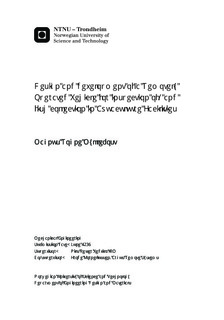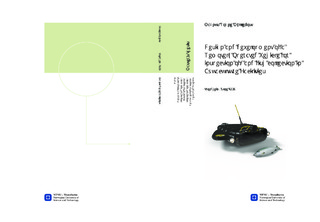| dc.description.abstract | A concept for a lightweight Remotely Operated Vehicle (ROV) named the Manta was designed for inspection of the net cages and collection of dead fish at aquaculture facilities. The current thesis presents the initial development and engineering design of the product, including requirements and need findings, material selection, technical solutions and design verification by the finite element method.
The Manta has a streamlined body with an internal cavity. Three vertical thrusters are mounted into thin wings on the exterior of the hull, and two horizontal thrusters are located inside the hull cavity. The ROV will use the suction through the hull created by the main thrusters to collect the dead fish into a rear-mounted net. Harsh environment and rough handling will require a robust design- and material selection.
The hull of the Manta has been designed and engineered based on the currently chosen components, which may be changed in the future. Based on the combination of easy manufacturing, good impact properties, low density and low cost, ABS plastic was selected as material for the hull. The hull design is based on 4 mm thick ABS plastic sheets manufactured by vacuum forming, with a total component weight equal to 6,6kg. The sections are joined together by adhesives and bolts. The estimated manufacturing cost of the hull is approximately 2000 NOK per unit including tool cost for 100 units.
The vertical thrusters, which are located in the wings, must have a low profile. A mechanical design of a so-called rim-driven thruster (RDT) has been developed and the current design has a predicted weight of 1,7kg. This is a design where the propeller is fitted permanent magnets on an outer ring instead of being powered by a centre axle. The resulting geometry has a significantly lower profile than conventional ROV thrusters, and a higher torque per length ratio. A thruster prototype and a special designed test rig for the prototype has been developed and manufactured at the IPM workshop. This test rig has been submitted to Argus for completion of their electromagnetic design.
Commercially available thrusters will be used for horizontal propulsion. These thrusters have to be streamlined since they are oriented parallel to the main direction of travel, as opposed to the vertical thrusters. The RMI 1000 thruster from RoboMarine Indonesia is the most relevant candidate, with a weight of 2kg and a 200N nominal thrust force.
The ROV now has an estimated total weight of 29kg, which is within the limits set by the requirements. The final weight may, however, differ slightly due to the uncertainties of the thrusters mass. | |

